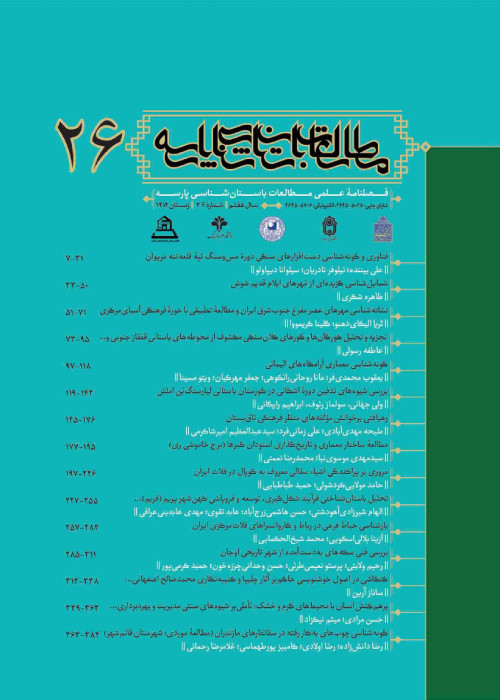Study of Cultural Developments and Changes in the Settlements of the Chalcolithic Periods until the Qajar Era of Kabudrahang Plain, Hamadan Province (Based on Two Seasons of Archaeological Study)
The settlements of human societies have always undergone cultural changes in their place over time. One of the reasons for this alteration is the change in livelihood strategies as a result of climate change, in the social organization seeks change in production, technology and.... Among these, the most important factor should be considered livelihood and a kind of biogeography-dependent determinism in meeting basic needs, in the structure of the pattern of human settlements, so economic, social and environmental frameworks complement each other to analyze why change. Or lack of it in the biological patterns of humans throughout their historical life. Kabudrahang plain has been one of the northern plains of Hamedan province and one of the most important ways of communication between the cultures of the Central Plateau, the northwest and the Central Zagros during different periods. This plain in the summer of 2007, under the title: “Study and identification of the ancient sites of Gol Tappeh and the central part of Kabudrahang” has been studied in a survey by collecting cultural materials from the area, in two seasons. The result of field studies includes 140 sites from different periods of Chalcolithic Period to late Islam, which shows environmental and cultural changes in the settlement patterns from the period of Chalcolithic Period to the Qajar era. One of the main topics addressed in archeology is the study of changes in ancient sites and, finally, the attempt to analyze the changes and developments of habitat patterns and their causes over time. In this regard, to examine the trend of changes in settlement patterns, hypotheses based on the influence of factors such as: “space”, “time” and “place” in the process of these changes are presented. However, the main question of this research is that what were the influential factors in the cultural changes of the settlements of Kabudrahang plain from the Chalcolithic Period to the Qajar era? The method selected in the present study will be the use of “Kennethe F. Watt” theory strategies based on GIS analysis with a historical-analytical approach. The results of the study of Kabudrahang plain settlements from the Chalcolithic Period to the Qajar era, show a change in the adaptive strategies of human groups present in it, based on livelihood patterns in location with the impact of the geography of the study area on the needs of human communities.
- حق عضویت دریافتی صرف حمایت از نشریات عضو و نگهداری، تکمیل و توسعه مگیران میشود.
- پرداخت حق اشتراک و دانلود مقالات اجازه بازنشر آن در سایر رسانههای چاپی و دیجیتال را به کاربر نمیدهد.



